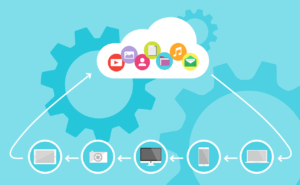Workplaces and tech worldwide have dealt with the new normal before in different iterations. Each global crisis requires jobs and office cultures to shift and adapt to each unique event. Humanity has received its fair share of troubles in the last decade, forcing HR departments to see their industries with new perspectives. How will HR tech drive the transition to the most recent version of your work’s new normal?
What the new normal looks like in HR tech
The new normal refers to how society, the economy and workplaces adjust after a disaster. There are objective historical points, like the COVID-19 pandemic, which shifted how employers and tech operated. Others are far more nuanced, such as the introduction of AI.
“The goal of HR tech and efforts to curate corporate culture during a global shift is to capitalize on the changes for greater productivity and success.”
For HR tech and workplace cultures, here are some of the changes you might attribute to the new normal:
- Increased cybersecurity due to work-from-home models and cloud infrastructure adoption
- Improved mobility and flexibility with scheduling and work-life balance
- Varied workplace events and meetups for emotional support and dynamic interactivity in dispersed workplaces
- Heightened productivity standards with technological supplements, like automation and AI
How the new normal changes HR tech
There are AI, machine learning, smart technology, AR, VR and countless other newcomers to the workplace tech scene. Apart from the severe learning curve companies must overcome to implement and use the tech to their advantage, what different expectations do you have amid the new normal?
HR tech must focus on privacy. With everything becoming digitized and decentralized, employee and client data will spread across countless silos. HR must leverage the same technologies compromising security to protect it.
For example, network segmentation is a recent trend for cybersecurity, encouraging a wide array of hubs to reduce the gravity of single servers. Companies must increase device visibility over a segmented network to solidify safety despite diverse resources being challenging to oversee.
Collaboration is another change in HR tech. Because workforces are everywhere, every project and communication you participate in must be seamless, as if everyone were in the office.
“HR tech is the cornerstone for crafting how modern teams make great work together.”
For example, what HR tech will store and restore data in the event of a cloud cyberattack? How does it measure employee performance? How are yearly reviews calculated if managers have not met their teams in person? Not only is HR responsible for choosing, testing and installing these tools, but they must prime their employees for how to have a positive relationship with them while accepting feedback for process improvements.
The most notable shift to expect is that employees associate tech usage and implementation with workplace values. For example, embracing new technologies and providing training signifies innovation and open-mindedness in a company. Corporations hesitant to invest in digital transformation might need more competitive advantage or younger generational interest. Therefore, HR departments ensure cohesion between tech use and corporate values.
How the new normal changes workplace culture
COVID-19 prioritized isolation and working from home for safety. Even though safety is not as much of a concern anymore, the independent mentalities linger. The mindsets manifest into a more individualistic workplace where you may struggle more than before during collaborative projects. Colleague engagement is low, and energy levels deplete faster during work-lead experiences and initiatives.
The new normal requires HR to promote a healthy balance for the culture shift with person-first operations.
“It is not about forcing workers to revert to old ways before the new normal — it’s about removing reliance on irrelevant strategies and embracing innovations in workplace culture as they arise.”
HR departments do this by prioritizing their talent and fostering their goals to reacclimate them to their workplace commitments. Otherwise, you suffer from low morale and mental health challenges among staff.
Another expectation is a priority on equality. The proliferation of tech and events like COVID-19 deepen systemic inequalities for minority populations. The digital divide was one of the most prominent concerns during the pandemic, and it continues to ascend in relevance as workplaces prioritize digital literacy and technological access expectations. Those who don’t have access to reliable internet or health care must rely on entities like HR departments to disperse technical resources fairly and use them to mend social justice gaps.
As tech employment reflects values, paying attention to diversity, equity and inclusion affirms how relevant a company remains in the new normal. If staff do not feel their personal missions align with their management, HR complaints will soar.
When will the new normal no longer be new?
For HR departments and tech experts, the new normal may only remain normal for a short time. AI, machine learning, robotics, and related technologies are advancing at light speed. It makes the definition of “new normal” constantly in flux, primarily when it revolves around human behaviors and digital transformation and integration.










